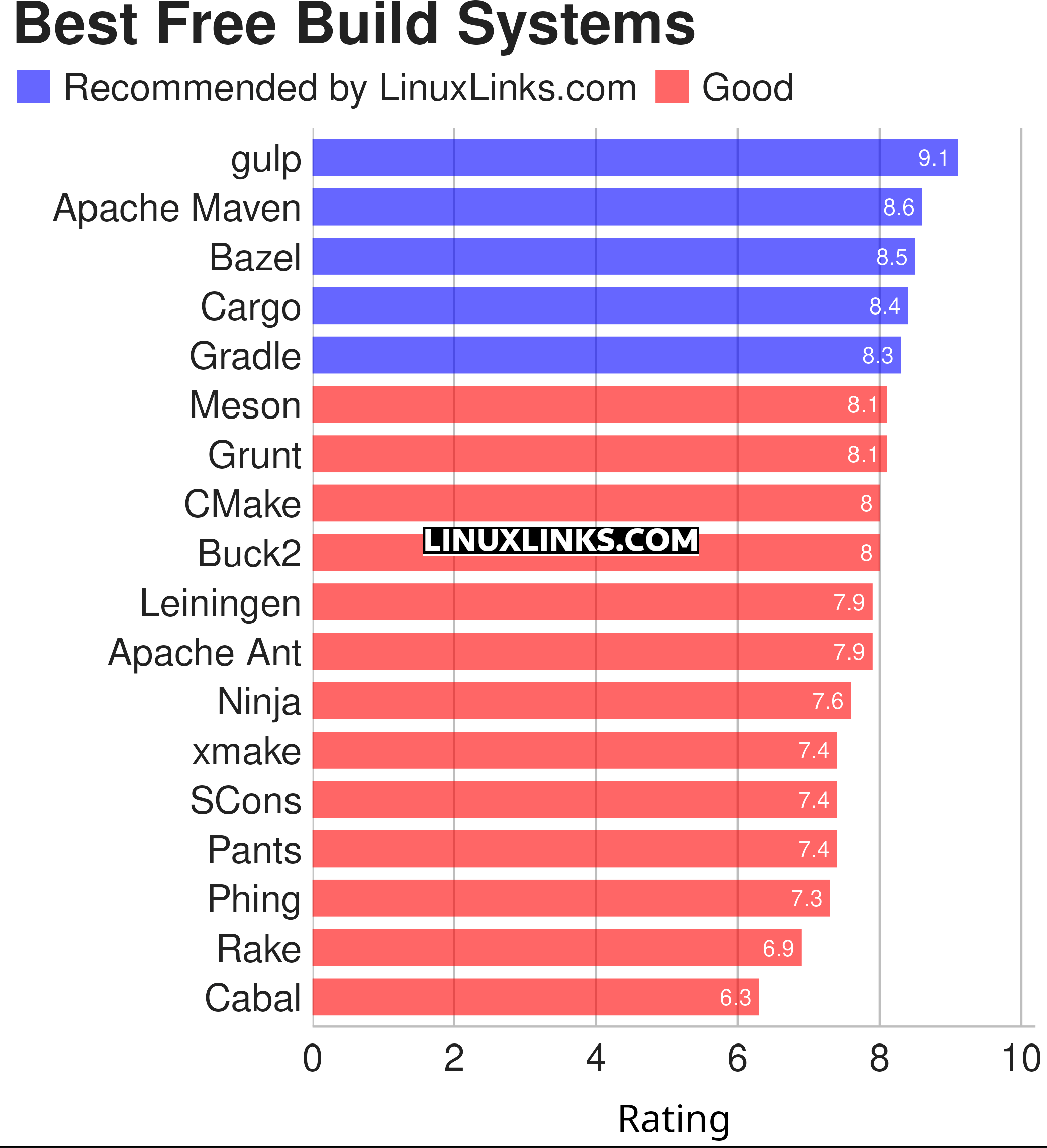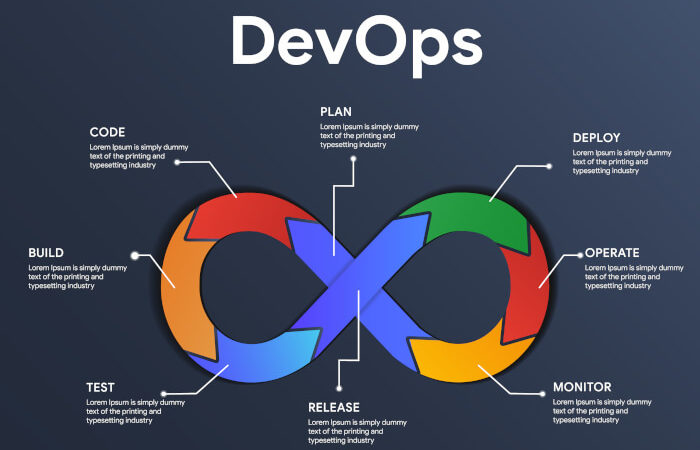Build automation is the process of automating the creation of a software build and the associated processes including: compiling computer source code into binary code, packaging binary code, and running automated tests.
This type of software takes as input the interdependencies of files (typically source code and output executables) and orchestrates building them, quickly.
In the beginning, Make was the only build automation tool available beyond home-grown solutions. Make has been around since 1976. Make remains widely used, especially in Unix and Unix-like operating systems. But there are lots of other high quality build systems.
Here’s our verdict captured in a legendary LinuxLinks-style ratings chart. Only free and open source software is eligible for inclusion.

Let’s explore the 18 build systems. For each title we have compiled its own portal page, a full description with an in-depth analysis of its features, together with links to relevant resources.
| Build Systems | |
|---|---|
| gulp | Toolkit to automate & enhance your workflow |
| Apache Maven | Build automation tool used primarily for Java projects |
| Bazel | Build and test your multi-language, multi-platform projects |
| Cargo | Rust package manager |
| Gradle | Build tool with a focus on build automation and support for multi-language |
| Meson | Next-generation build system |
| Grunt | JavaScript Task Runner |
| CMake | Family of tools designed to build, test and package software |
| Buck2 | Encourages the creation of small, reusable modules |
| Leiningen | Automating Clojure projects |
| Apache Ant | Tool for automating software build processes |
| Ninja | Small build system with a focus on speed |
| xmake | Cross-platform build utility based on Lua |
| SCons | Software construction tool |
| Pants | Scalable build system for monorepos |
| PHing | Build system based on Apache Ant |
| Rake | make-like build utility for Ruby |
| Cabal | Common Architecture for Building Applications and Libraries |
This article has been revamped in line with our recent announcement.
 Read our complete collection of recommended free and open source software. Our curated compilation covers all categories of software. Read our complete collection of recommended free and open source software. Our curated compilation covers all categories of software. Spotted a useful open source Linux program not covered on our site? Please let us know by completing this form. The software collection forms part of our series of informative articles for Linux enthusiasts. There are hundreds of in-depth reviews, open source alternatives to proprietary software from large corporations like Google, Microsoft, Apple, Adobe, IBM, Cisco, Oracle, and Autodesk. There are also fun things to try, hardware, free programming books and tutorials, and much more. |

Forgot to mention xmake
Not now 🙂
Lazarus is an amazing IDE for FreePascal. I’ve been using it for more than 10 years. Still gets at least 4 updates/fixez every 3 months.
I agree. Lazarus is included in our IDE roundup.